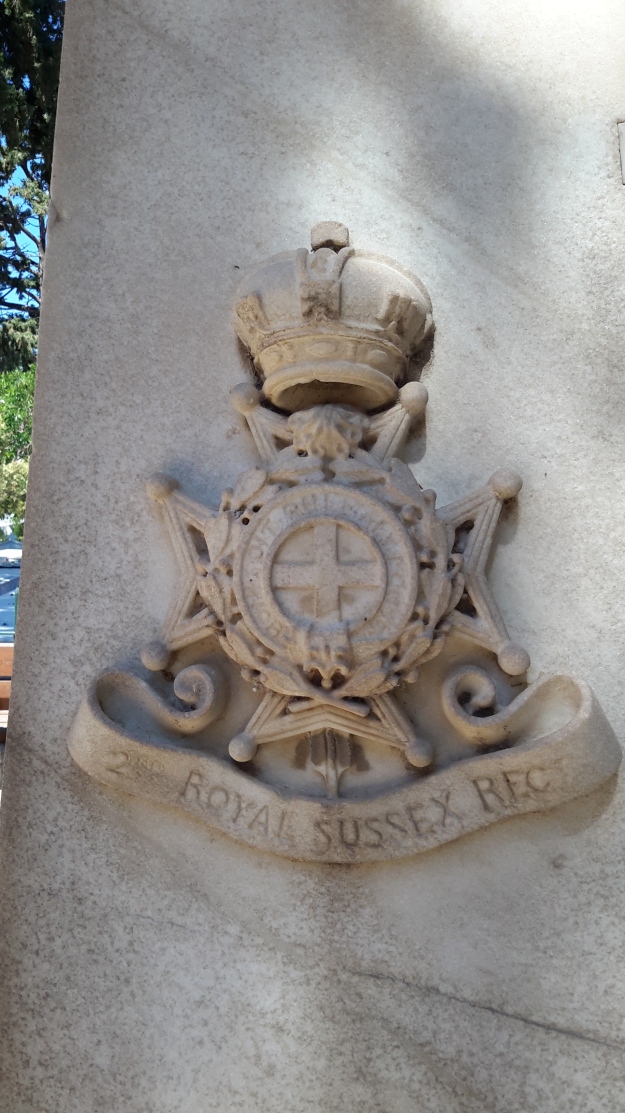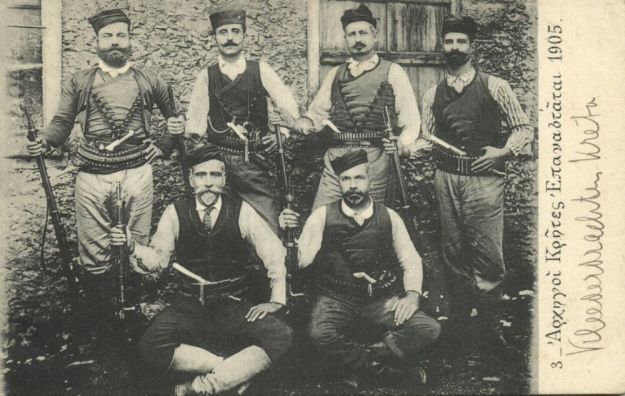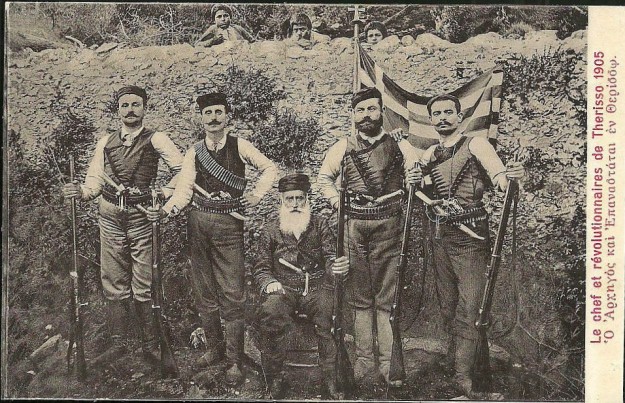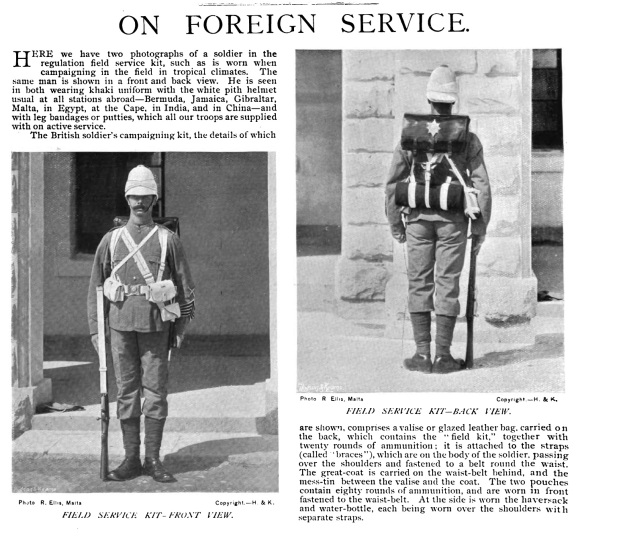
Drummers 2/Royal Sussex. (Assuming that’s an Ibex on the bottom left, the photograph dates from between August 1906 when they received the animal, and February 1907, when the battalion left the island.)
On 29th May 1905, the Head Quarters and five other companies of 2/Royal Sussex left Malta bound for Crete. Extracts from the battalion diary describe their experiences:
“[The battalion] under Lt Col. J. G. Panton moved to Crete in S. S. Sardinia to assist in the suppression of the insurrection of the followers of VENEZELO against the Cretan Government. The insurrection continued until the end of Nov. 1905.
Detachments of the battalion were distributed over the KANDIA secteur, (i.e. the British secteur) in fortified (posts?) and camps. Small columns were also sent out to patrol the district. A detachment of the battalion was also quartered at CANEA in the International zone.
Colonel Panton commanded the British Troops in Crete, and had under his command 400 of 1.K.R.R. [1/Kings Royal Rifles] in addition to various details of R.E. – A.S.C. etc [Royal Engineers & Army Service Corps.]
The Officers of the Bn. In addition to their military duties were employed in the administration of martial law, which was still continued after the conclusion of the 1905 insurrection. The work of the troops during the insurrection involved considerable hard work and discomfort. The armed bands of insurgents avoided coming into contact with the troops, and on three occasions only was there actual fighting between British troops and the insurgents viz. at SKYLOS, CORPHAIS and at BUTZENARIO.
The insurgents were armed with Gras rifles (chiefly) – very badly kept. Their shooting was bad.
Two cruisers, the “VENUS” & “MINERVA” and afterwards the “DIANA” were stationed at Crete and frequently co-operated by moving detachments of the Battn. by sea, to various parts of the Island. The signallers of the Battn did excellent work in in keeping up communication between all posts in the district & with Head Quarters in KANDIA………
On April 28th May 1st 1906 ‘C’ E’ and ‘H’ Companies under command of Bt. Lieut. Colonel H.R. Lloyd arrived at Crete from Malta on the “MALACCA”, disembarkation took place under considerable difficulties owing to the rough state of the sea at the time and the absence of any labour at KANDIA.
The Battalion was split up into many Detachments during the elections in the British secteur in May, and underwent a considerable amount of arduous work…….
During September trouble was expected in the island of Crete owing to the resignation of Prince George of Greece from the position of High Commissioner of Crete. Nothing of any account occurred in the KANDIA secteur, but at CANEA on the day of his departure as party of Insurgents fired at the International Troops, killing a Russian cavasse [official interpreter] and wounding a Russian soldier- a Detachment under Lieutenant R. (Pinker?) of the battalion was at Canea at the time but took but little part in the affair…….
Prince George of Greece presented the Battalion with two Ibex as Regimental pets in August 1906. The male Ibex died before the Battalion left Crete….
On 11th January 1907 a monument erected by the 2nd Bn in memory of their Comrades, who died in Crete during 1905-1907, was unveiled by Bn Colonel J.G. Panton C.M.G. in British Cemetery at Crete.”
The battalion left Crete, en-route for Belfast, on 25th February 1907.










